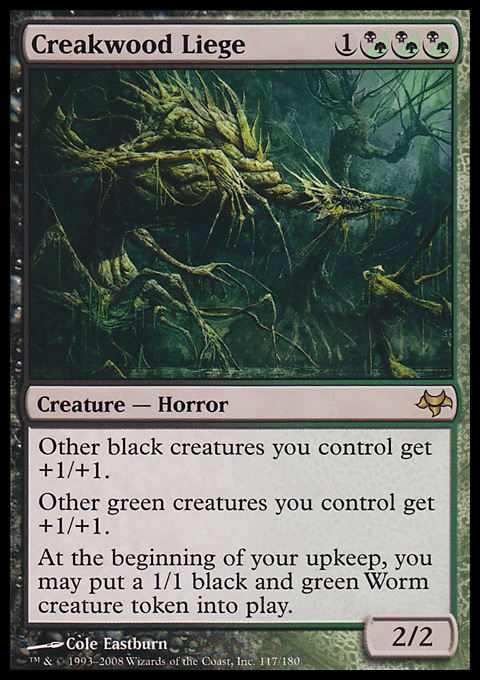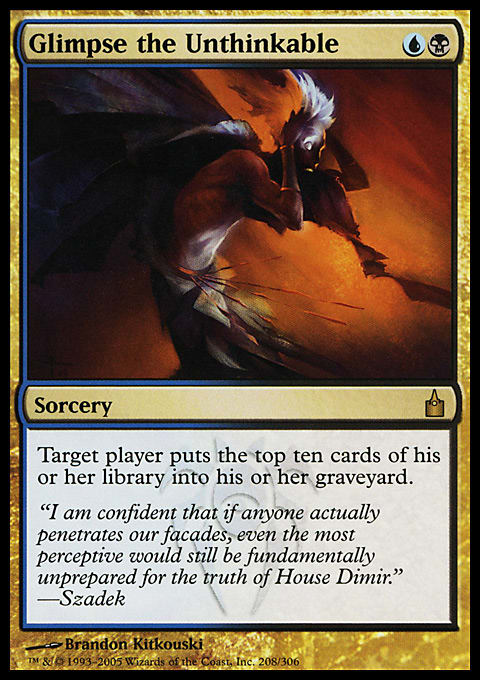It has been a long while since I have ventured off the beaten path. It’s time to mix things up a bit, so bear with me this week; your collection will thank you. Normally, it is difficult to pinpoint a topic that covers the spectrum of Magic players, the vast collective, at one time. The one point of Magic that ties the most diverse group together is prereleases, but even then, the majority of Magic players will never actually attend one of these events. So what influence do we see from these mystical players who make up well over ninety percent of the Magic population? If they are such a large portion of the population, it would also make sense that they at least comprise a reasonable portion of the singles market as well, and that is precisely the rabbit hole we are diving down today.
Casual finance is a tough beast to tame—it seems that once you have mastered the “rules,” something new crops up to create at least a dozen new exceptions. A great example can be taken from the recent release of Dragons of Tarkir. Up until now, it was fairly easy to throw a dart at the wall of Dragons and come out ahead a few years down the road, as they would almost always end up in the bulk bins during their Standard lives. A few cards have broken this general rule in the past—including Stormbreath Dragon from Theros last year—but never before have we seen such an onslaught of Dragons. What does this mean for the set in the long term? Will some of these Dragons’ long-term prices reflect that of Avacyn, Angel of Hope or Griselbrand or will we be staring down a pile of Bruna, Light of Alabaster in two years?
The best way to approach this subject is to look at the overall playability of the cards outside of the Standard environment. In casual terms, this set seems to be as big a win as any, and that bodes well for the long-term value. We also have a few potential players in Modern, including Thunderbreak Regent, meaning even at rotation, at least a few cards are unlikely to tank, making the sealed product less of a hassle for stores to sit on. This effect in the past has kept boxes from bottoming out and gives these sets a leg up in terms of gaining value. If sealed boxes are not just left collecting dust because people still want the cards inside, that means more is being opened, leading to higher prices quicker for those still sealed; that all makes sense, right?
So now that we have pointed out the obvious, Dragons of Tarkir clearly was a giant win overall, so let’s look a little further back into the realm of Modern but from a casual perspective. I have heard a few people complaining about the lack of playable Modern cards within Modern Masters 2015 Edition, and though I can see the argument from a player’s perspective, I ask you to think of this set from the perspective of Magic as a whole. While, yes, this product is clearly aimed toward the more competitive player—even going so far as to build the set for drafting—that does not mean every kitchen-table player is a novice and will not buy in. Knowing this going in, I believe Wizards did a great job of targeting a number of reprints that needed to happen while at the same time alleviating the demand on some very sought-after cards such as Creakwood Liege. Just over forty of the cards in Modern Masters 2015 Edition are played in Modern, and while you can cause uproar about it when you break down the numbers, that is actually skewed heavily, even for targeting that audience. The reality is that if only the competitive crowd were to buy into any one set, that would probably be one of the most disastrous quarters in Wizards of the Coast history; we cannot sustain this game alone.
So what does this mean for the Modern market in terms of the casual crowd? Considering there are so many more cards kept out of the bulk bins by casual play than by sanctioned play, even the number of cards they did reprint will only push the market’s focus in other directions. The key is identifying what cards fill voids in decks and archetypes that may now be newly explored territory for many players.
I am unsure of the average lifespan of a Magic player, but many of the mechanics featured in Modern Masters 2015 Edition will be unexplored territory for many, as every card in the set is at least three to four years old at this point. When you break down how long any one person plays a game on average, I have to imagine three to four years would be relatively high on the scale—in terms of video games, we are talking dedication typically only found in MMORPGs. Of course, this means that with unexplored territory also comes curiosity. After all, who isn’t excited to see a card or archetype he or she has never seen before? Isn’t that why we all grow excited about spoiler season and prereleases?
Any keyword or design element within Modern Masters 2015 Edition is open to being researched and designed around. If you open a box and have never seen graft, it is likely you may do some Gatherer searches to further acquaint yourself. This means cards with graft—or any other mechanic—suddenly have eyes on them that they may not have had otherwise. As I want this article to be something you can still read when we see the hypothetical Modern Masters 2017 Edition and gain the same knowledge, I am going to shy away from particular decks or cards this week, but you are all creative—take a card or mechanic in the set, and do a Gatherer search for a themed deck around that. Look at what cards would instantly draw your eye and what sort of flashy interactions may exist—these are the cards to watch going forward.
Of course, the main issue people are going to bring up with this whole concept is that, unlike normal packs that can be found at your local Wal-Mart or other grocery store, Modern Masters 2015 Edition must be purchased from a local game store. While this is true and will certainly stifle some of the initial interest along with the high MSRP that will not stop anyone, even the most casual of players, from eventually seeing a breakdown of the set, and regardless of whether you are holding the card in your hand or in your head, the brewing process is much the same.
Modern Masters 2015 Edition will drive the price of cards, such as the aforementioned Creakwood Liege, down while the competitive crowd is attempting to draft its way to a Tarmogoyf. Much like what we saw with cards like Stonehewer Giant, it may even hit bulk, but slowly over time, these cards will rebuild. Every new player who enters the game is another player who did not have a Stonehewer Giant before, and even if ninety percent of the player base never has use or interest in one, that would still be more people than many competitive cards through the history of the game.
The casual market decides the inevitable price of nearly every set down the road; for the first two years, Standard may dominate the marketplace, but the difference between having a two-hundred-dollar box in five years versus a five-hundred-dollar box usually requires much more than a few playable cards in Modern. While sets like Dragons of Tarkir seem to be no-brainers, some of these sets do not realize their true potential until they become somewhat scarce—Dragon’s Maze is one to keep an eye on for long-term value, as cards like Mirko Vosk, Mind Drinker could easily start hitting the $5 mark in a few years, and if more than just a couple cards catch interest, we may see people busting packs for more than just Voice of Resurgence.
So I have covered the specifics of keyword association, and in the past, I have talked about the other factors to watch for, but I will quickly cover it again: linear themes and the cards that would be staples. For example, if you think of mill, you probably have a few cards in mind already. Is Glimpse the Unthinkable among them? If not, you may want to reevaluate your strategy. Even though this card is steadily climbing already, it is certainly feasible to see cards such as this have no real ceiling until a reprint comes along. I am not saying I am excited about dumping $20 to $30 into copies of these, but there is a reason cards like this continue to climb, and it isn’t your local Friday Night Magic. Doubling Season is, of course, the prime example of this type of card, and it’s really not a fair assessment against most, as it can span such a broad number of archetypes.
As much as I want to dive deeper into this topic now, I believe it is best to cover the casual market in small doses when we have pieces of the puzzle to compare it to—and in this case, that’s Modern Masters. I really do feel that the key to understanding how Magic finance works is contained primarily within this community and has been my primary point of focus for years now. I will leave it as is for this week, but if you have any particular facet of the casual community you are curious about or have any questions, please post them. I would like to run one of these articles every few months as a good way not only to provide information for a slow Standard week, but also to inform the competitive crowd of the inner workings of this game we all love so much. Enjoy the Drafts, and try not to spend all of your money this weekend—I know I am going to have a rough time.
Ryan Bushard

























